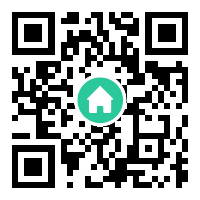Telegram crypto groups have emerged as a cornerstone of the digital asset ecosystem, offering a dynamic space for traders, enthusiasts, and blockchain projects to connect. With over 800 million active users globally, Telegram’s encrypted messaging platform has become a hub for real-time discussions, market analysis, and community-driven initiatives. These groups range from casual chatrooms to highly organized communities sharing trading signals, project updates, and educational content. As cryptocurrencies continue to reshape finance, Telegram’s role in fostering collaboration and information exchange has solidified its position as a critical tool for crypto participants.
The Rise of Telegram as a Crypto Community Platform
Telegram’s appeal lies in its blend of privacy-focused features and user-friendly design. Unlike traditional social media platforms, Telegram offers end-to-end encryption for secret chats, self-destructing messages, and the ability to host large groups of up to 200,000 members. These features have made it a preferred choice for crypto communities seeking to avoid censorship or surveillance. Projects launching initial coin offerings (ICOs) or decentralized autonomous organizations (DAOs) often use Telegram to build grassroots support, while traders rely on channels for instant updates on market-moving news. The platform’s bot API has also enabled automated price alerts, airdrop notifications, and even basic trading tools, further integrating it into the crypto workflow.
Types of Crypto Groups on Telegram
Telegram’s crypto ecosystem can be broadly categorized into three types. First, trading signal groups provide subscribers with buy/sell recommendations, often backed by technical analysis or insider insights. These range from free communities to premium services costing thousands of dollars monthly. Second, project-specific groups serve as official hubs for blockchain startups, offering development updates and AMA (Ask Me Anything) sessions with founders. Third, educational communities focus on teaching blockchain fundamentals, smart contract development, or investment strategies. A growing subcategory includes NFT-focused groups discussing digital art trends and upcoming drops.
Opportunities and Risks in Telegram Crypto Spaces
While these groups offer valuable networking opportunities, they also harbor significant risks. Pump-and-dump schemes frequently originate in Telegram channels, where influencers artificially inflate low-cap coin prices before selling their holdings. Scammers impersonate legitimate projects to phish for private keys, while fake airdrop campaigns steal wallet credentials. A 2023 Chainalysis report estimated that 15% of crypto scams begin on messaging platforms like Telegram. Regulatory uncertainty compounds these issues—many groups operate in legal gray areas, with some countries banning crypto-related Telegram activities altogether. Users must exercise due diligence, verifying admin identities and cross-checking information before acting on group recommendations.
The Future of Crypto Communication on Telegram
As Web3 adoption grows, Telegram crypto groups are evolving beyond simple chatrooms. Innovations include token-gated communities requiring NFT ownership for entry and decentralized bots that interact with blockchain networks. Some groups now integrate with decentralized exchanges (DEXs), allowing members to execute trades directly through Telegram interfaces. However, increased regulatory scrutiny looms—authorities may demand message monitoring capabilities that conflict with Telegram’s privacy ethos. The platform’s recent embrace of blockchain-based usernames and NFT-like assets suggests deeper crypto integration ahead. Ultimately, Telegram’s ability to balance openness with security will determine its longevity as a crypto communication standard.
In conclusion, Telegram crypto groups represent both the democratizing potential and inherent volatility of the blockchain revolution. They empower global participation in financial markets but require users to navigate an unregulated, high-stakes environment. As the industry matures, these communities will likely adopt more sophisticated verification systems and decentralized governance models. For now, they remain indispensable—if imperfect—digital town squares for the crypto age.













